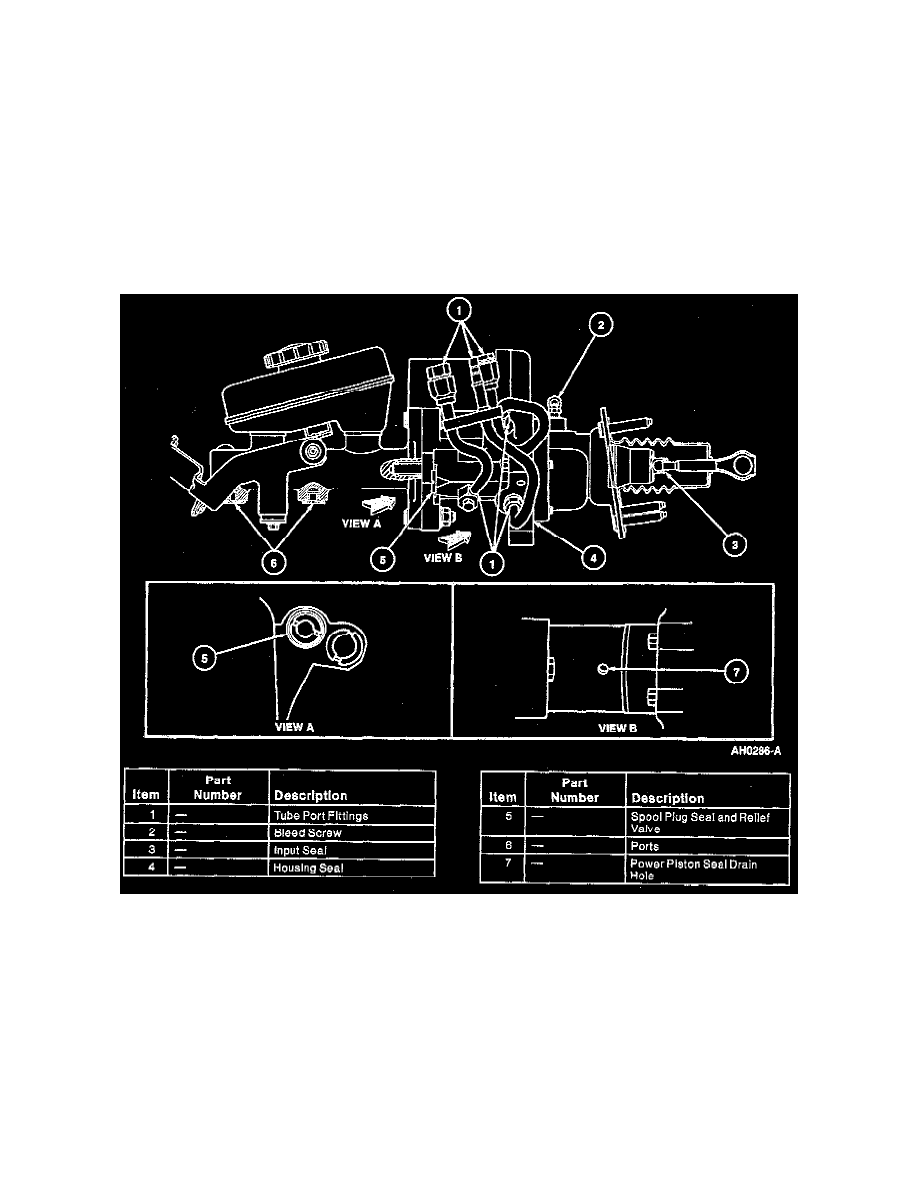Mustang Cobra V8-281 4.6L DOHC VIN V MFI (1997)

Hydraulic Brake Booster: Testing and Inspection
CAUTION: Power steering fluid and brake fluid are not compatible. Do not add power steering fluid to the brake master cylinder or damage to seals
will occur. Do not add brake fluid to the power steering reservoir or damage to the seals in the steering system will occur.
NORMAL OPERATION
Normal hydro-boost will produce certain characteristic noises that current technology cannot correct. These noises occur, for the most part, when
the brake pedal is manipulated in a manner not associated with the everyday braking habits. The general categories of normal operating noise are
hissing, clunk, click and chatter noises. The hydro-boost will emit normal hissing noises when above normal pedal efforts are applied. The hiss
sounds are particularly noticeable with the vehicle motionless and will increase in intensity as pedal efforts increase and system operating
temperatures increase. Loud hissing sounds at or below normal pedal effort 111-156 N (25-35 lbs) warrant investigation and possible correction.
clunk, chatter or clicking noises will be heard when the brake pedal is quickly released from high pedal efforts. The "quick release from high
pedal effort application" noises, will most likely be heard with the vehicle motionless or during a fast stop-start condition.
LEAKAGE
Hydro-Boost Poser Brake Booster Components
Possible sources of leakage from the hydro-boost power brake booster are:
^
Input seal
^
Power piston seal (through drain hole located on underside of hydro-boost brake booster).
^
Housing seal.
^
spool plug seal.
^
accumulator cap seal.
^
tube port fitting.
^
relief valve.
^
bleed screw.
CHECKING FLUID
^
Inspect power steering pump reservoir for condition of fluid.
